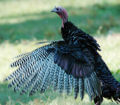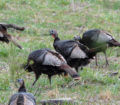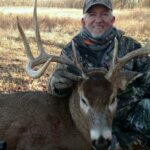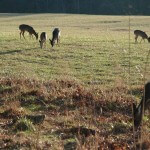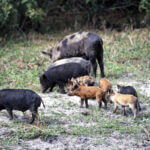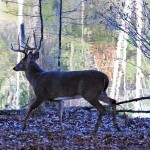Editor’s Note: Editor’s Note: Since some states’ turkey seasons continue through the first part of May, and others don’t end until May 31st or even in June, we’re looking this week at more ways to take turkeys.
After coming in from a morning turkey hunt, I once heard a well-known outdoor writer say, “I missed him, but that was the first turkey I’ve ever missed in my life.” If a person who misses a turkey tells you that it’s the first turkey he’s ever missed in his life, either he hasn’t been hunting turkeys for very long, and/or he hasn’t shot at very many turkeys. Although no one likes to miss turkeys, it happens. The more years you put in chasing gobblers, the more years you’ll miss turkeys. So, if we can determine what to do to prevent us from missing, we should be able to reduce the number of turkeys we miss.
 * Make sure you can feel the stock against your cheek, before you squeeze the trigger on a gobbler. Plenty of turkey hunters become so mesmerized by looking at the turkey’s head that they bring the butts of their shotguns to their shoulders and squeeze their triggers before their cheeks are against the stocks.
* Make sure you can feel the stock against your cheek, before you squeeze the trigger on a gobbler. Plenty of turkey hunters become so mesmerized by looking at the turkey’s head that they bring the butts of their shotguns to their shoulders and squeeze their triggers before their cheeks are against the stocks.
* Look at the center of your barrel before you look for your sights. Even if you have your cheek in the proper position, if you’re not looking straight down the barrel, you will miss the turkey
* Make sure you see the bead on the end of the barrel before you shoot. Often, turkey hunters look at the turkey’s head or the turkey’s wattles. They have their cheeks against their stocks and squeeze their triggers, but they forget to look for the beads on the ends of their barrels to put on the turkey’s wattles.
 * Don’t cant your gun. Finally after I had missed several turkeys, a friend of mine said, “John, sit down next to the tree where you were sitting, and go through your shot routine just before you shot at the turkey.” I went through every motion and maneuver I had made. Then my friend said, “That’s it.” I looked up surprised and asked, “What’s it?” He said, “You’re canting your gun to the left before you squeeze the trigger, so you’re shooting where the turkey was instead of where he is.”
* Don’t cant your gun. Finally after I had missed several turkeys, a friend of mine said, “John, sit down next to the tree where you were sitting, and go through your shot routine just before you shot at the turkey.” I went through every motion and maneuver I had made. Then my friend said, “That’s it.” I looked up surprised and asked, “What’s it?” He said, “You’re canting your gun to the left before you squeeze the trigger, so you’re shooting where the turkey was instead of where he is.”
* Consider shooting a rifle scope (turkey scope) on your shotgun. In the beginning of turkey hunting, there was no such thing as a turkey scope. But today, the outdoor market offers some quality turkey scopes. I still like the scopes with the crosshair reticles better than the red dots. I guess that’s because in the early days I knew that as long as the reticles were straight up and down and intersected the horizontal reticle, I wasn’t canting my gun. I also learned that all during deer season my cheek weld to the stock was somewhat higher when I was shooting a rifle scope than when I used the bead on the end of the shotgun as my aiming point. By putting a rifle scope on my shotgun barrel, my cheek weld was in the same place when I hunted turkeys as it was when I hunted deer.
 I don’t claim to know everything about hunting turkeys, but I do believe I know every way you can miss a turkey. Like I tell my children, “You can learn from the lumps I’ve put on my head (mistakes I’ve made), or you can put those same lumps on your head.”
I don’t claim to know everything about hunting turkeys, but I do believe I know every way you can miss a turkey. Like I tell my children, “You can learn from the lumps I’ve put on my head (mistakes I’ve made), or you can put those same lumps on your head.”
To learn more about turkey hunting, check out John E. Phillips’ print, Audible, Kindle and Nook turkey books at https://johninthewild.com/books/#turkey and at www.barnesandnoble.com. You also can download a free Kindle app that enables you to read the book on your iPad, computer or SmartPhone. You can learn more about calling turkeys by going to johninthewild.com/audio-files/ for audio turkey tapes to purchase of Lovett Williams, Rob Keck and Chris Kirby, available for download to your SmartPhone, tablet or computer. For a free copy of John E. Phillips’ “The Turkey Gobbler Getter Manual,” go to https://johninthewild.com/free-books/ to download.

